|
G u m b a l l P r o j e c t - T h e P u l l m a n S t r i k e
...an introduction by Carrie Iverson* Topped by a locked container whose wares are visible but inaccessible, the gumball machine churns out one item at a time with the insertion of a coin and the twist of a lever. In this way, it can be seen as an efficient metaphor for capitalism, from the control of its contents to its hidden dispensing mechanism activated by the interaction of money and the hand. Fittingly, each of the modified machines in this installation by JB Daniel showcases an individual connected to the historic Pullman labor strike, with their specific roles reflected through the machine's alterations and materials. Every aspect has been carefully considered, from the patriotic American colors (red, white, and blue) to the orientation of the portraits, looking left for the soon-to-be socialist Eugene Debs and looking right for the industrialist George Pullman. Assigning equal value to all types of labor—construction, food gardening, preservation, and studio practice—has long been an integral part of Daniel's work. The artist moved to Pullman in 1989, embracing the neighborhood's self-determined community spirit by actively caretaking historic buildings while advocating for a nuanced approach to preserving the many layers of its complex history. Like David Ireland's Capp Street house in San Francisco, Daniel has also made the ongoing restoration of his Pullman buildings a substantial part of his art practice. His latest rowhouse project (the togetherhouse shared with his wife Amy) includes incorporating small "saves" from different periods of the building's history (such as tiles and wallpaper) so that it is not merely a nostalgic recreation of one era but acknowledges the intervening layers of history including a large dining room table for conversation and discussion. As Daniel notes in his working description of the gumball series, "It was an effort to locate more machines (and when found they were in very rough condition). Finding parts /repairing became an interesting and somehow meaningful aspect of the work." This connection to the labor of repair and alteration becomes an essential aspect of their construction. For example, in creating the machine that is an homage to labor activist Jennie Curtis, Daniel states, "The bottom portion consists of many yards of muslin and wood from a factory worktable. One day was spent cutting the muslin into pieces (bottom). The next day and a half were spent cutting the previous day's quantity plus forty percent more (the approximate difference in pay from 1893 and 1894)." Building this acknowledgment of the discrepancies of time, pay, and labor into the physical creation of the piece amplifies the content. Conceptually, turning machines into reliquaries for specific people draws attention to the fact that the factories of the Industrial Revolution were driven by individuals, whether factory workers like Jennie Curtis or factory owners like George Pullman. Each piece poetically embodies an aspect of its subject: Debs's passion for equality, Curtis's fight for equal pay, Carwardine's demand for justice, Stanley's childhood memories, Altged's humanism, Addams's moral compass, and Pullman's egoism (notably, his stand is the only one painted gold). Displayed together, they emphasize how interlocked their roles were in creating the dynamics of the Pullman Strike, a collective effort driven by individual interests and passions in a decisive moment in America's history. Pullman was initially constructed as a "model town," one man's vision of an industrial utopia. Through its various iterations— the 1894 Pullman Strike, the 1898 Illinois Supreme Court order forcing the Pullman company to sell off "the town”, the working-class effort to save it from development in the 1960s and 70s, and its more recent re-envisioning as a Historic National Park— it has reflected the challenges of American history in microcosm. The Greek origins of the word utopia - οὐ ("not") and τόπος ("place"), i.e., "no-place"- speak to the inherent paradox of the ideal. Utopias have always been a mirror, reflecting current priorities and ideologies. The changing framework of what (and who) an ideal community consists of is one of the most fascinating aspects of Pullman. As Daniel says, "One of the most important things we can do here besides preservation and interpretation, is to shift Pullman from a nostalgic perspective to a contemporary question." This installation presents some of Pullman's most significant questioners, inviting us to examine our thoughts on labor and community. *Born and raised in rural Virginia, Carrie Iverson received her BA from Yale University and MFA from the School of the Art Institute of Chicago. Known for her innovative use of materials, her site-responsive installations have incorporated glass, print, found objects, video, and sound. |


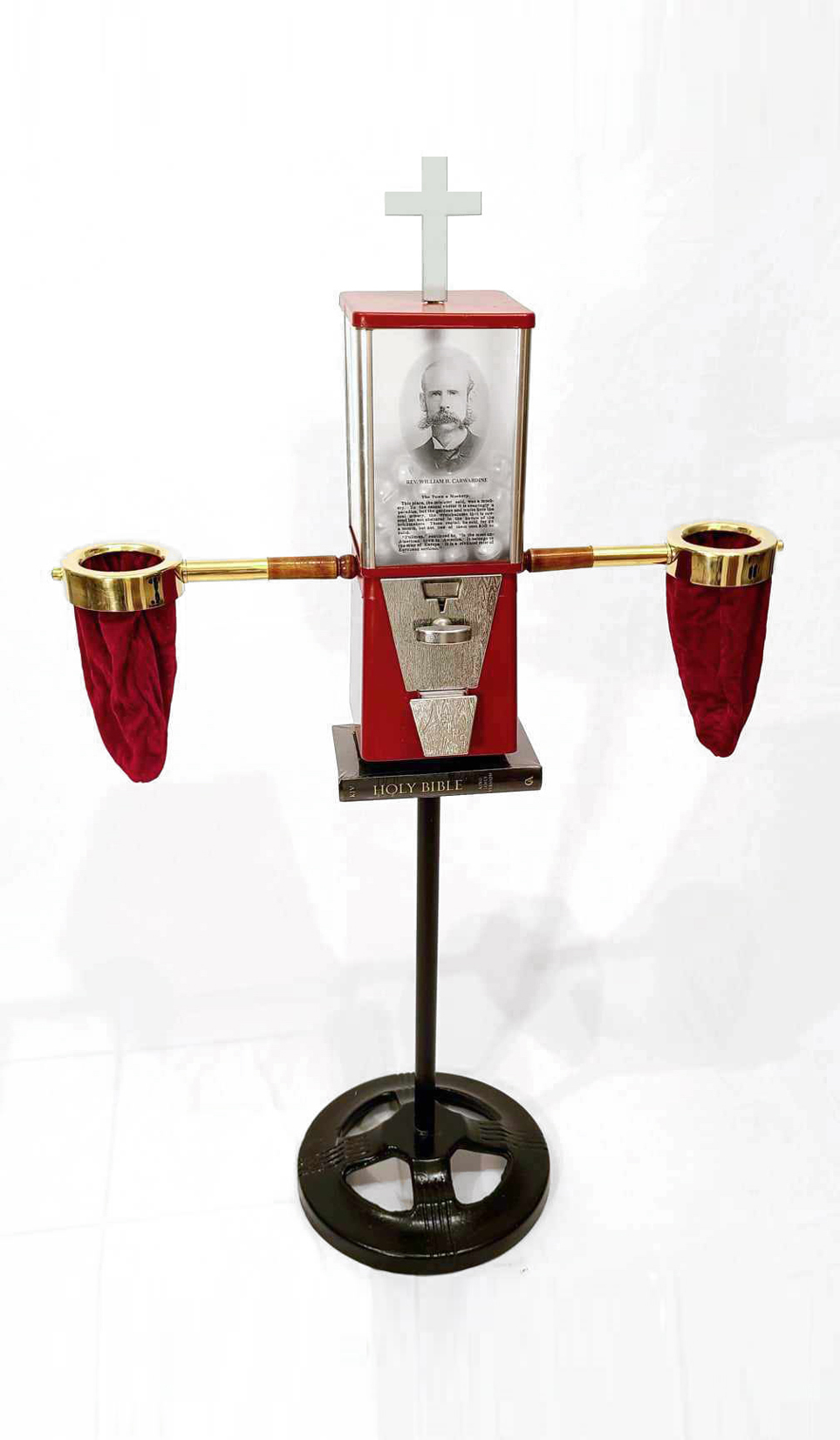
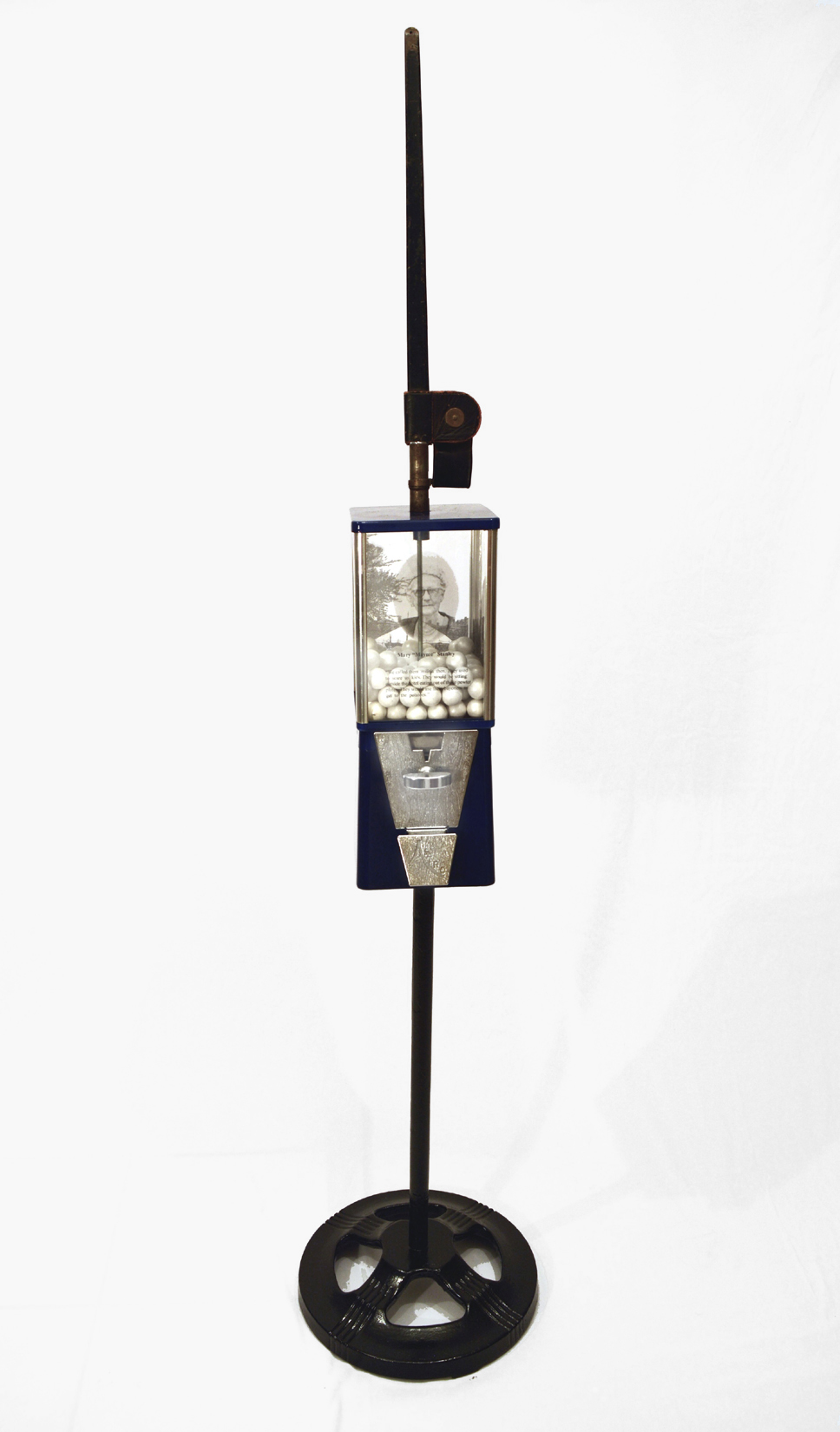
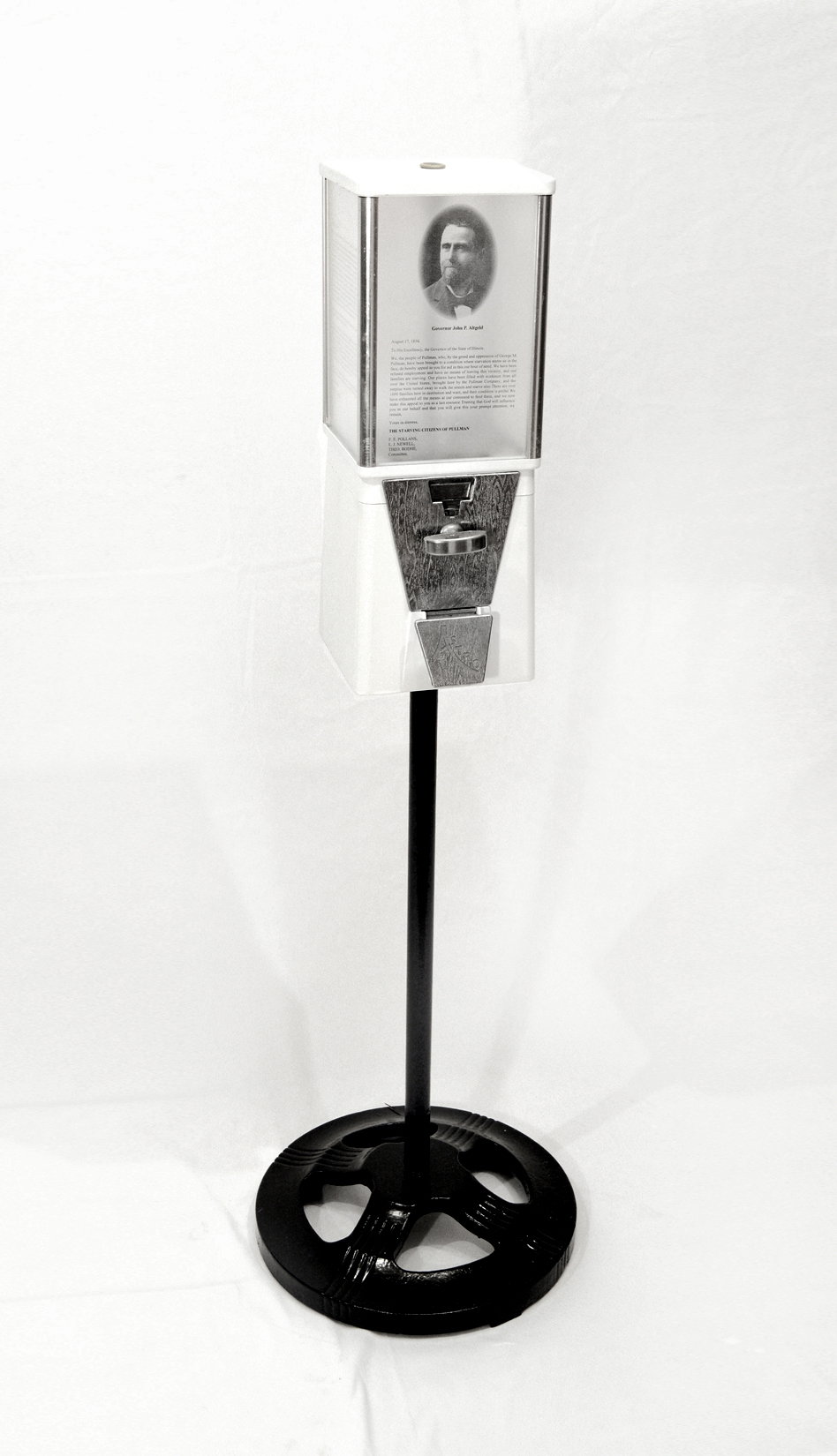
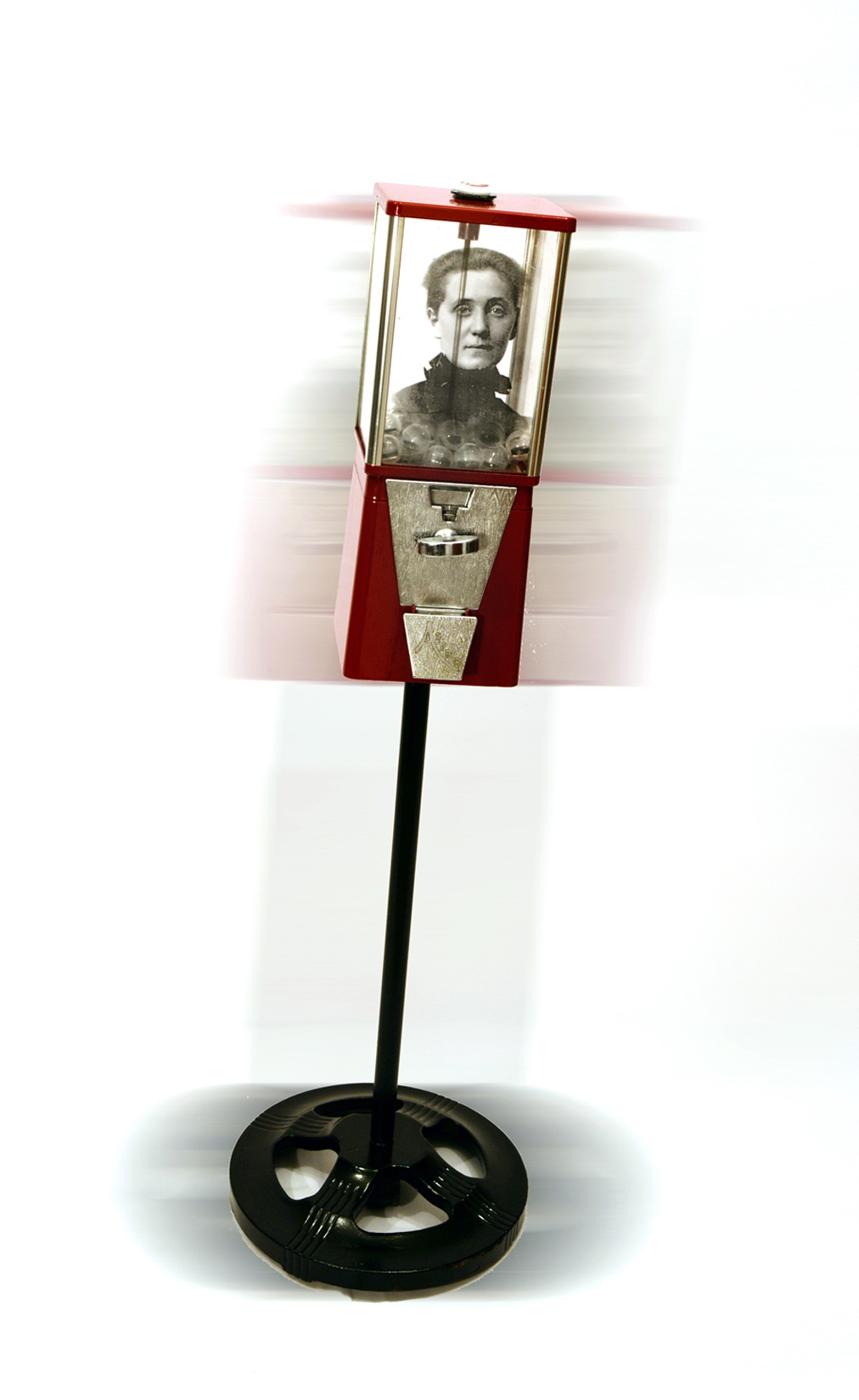
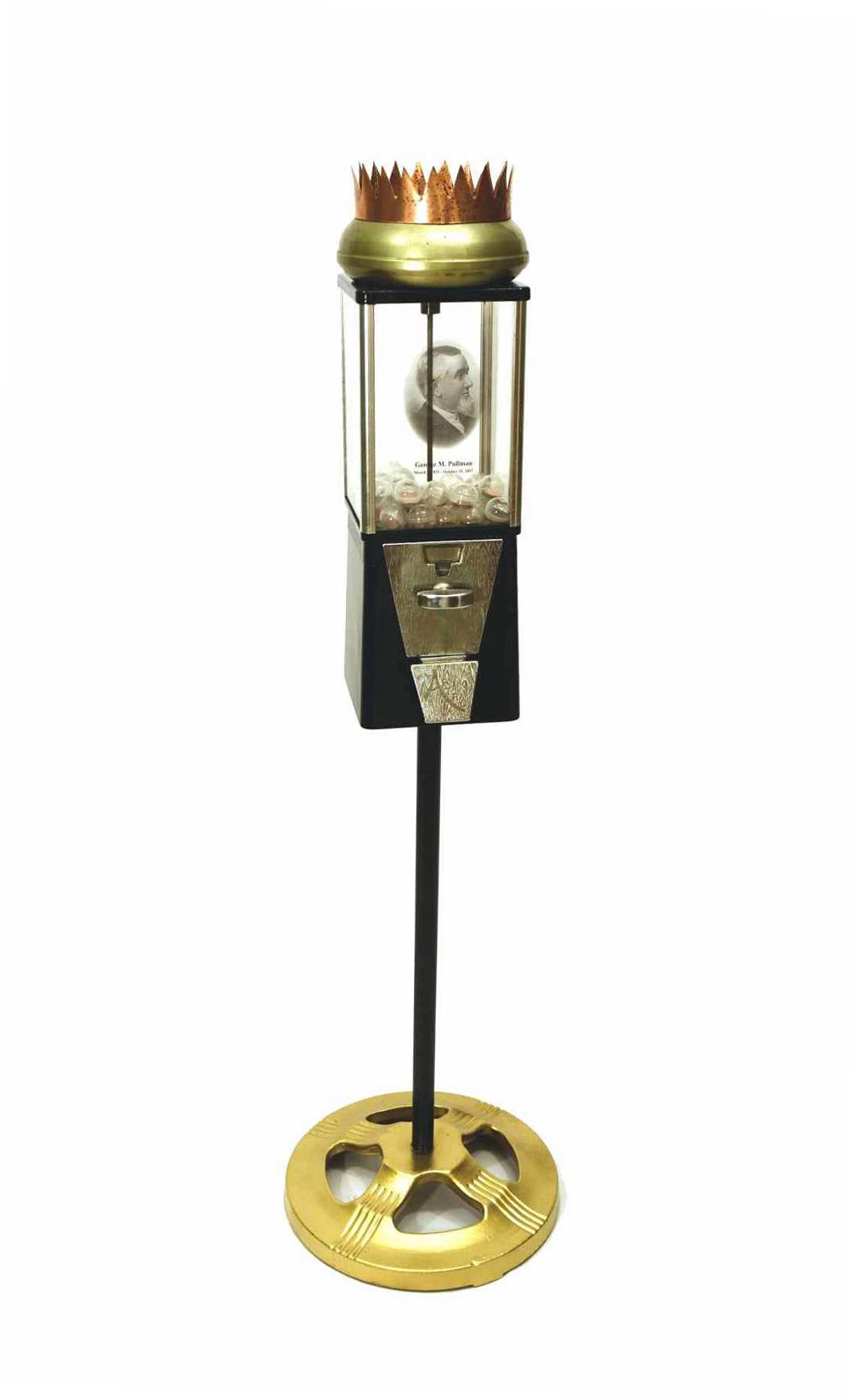
The Gumball Project - main |
other ART sites design by: t a l l s k i n n y . c o m